Two front-facing eyes works well for us but not for everything else. These animals have some bizarre and beautiful eyes that let them see the world in very different ways.
Ornate wandering spider, Brazil
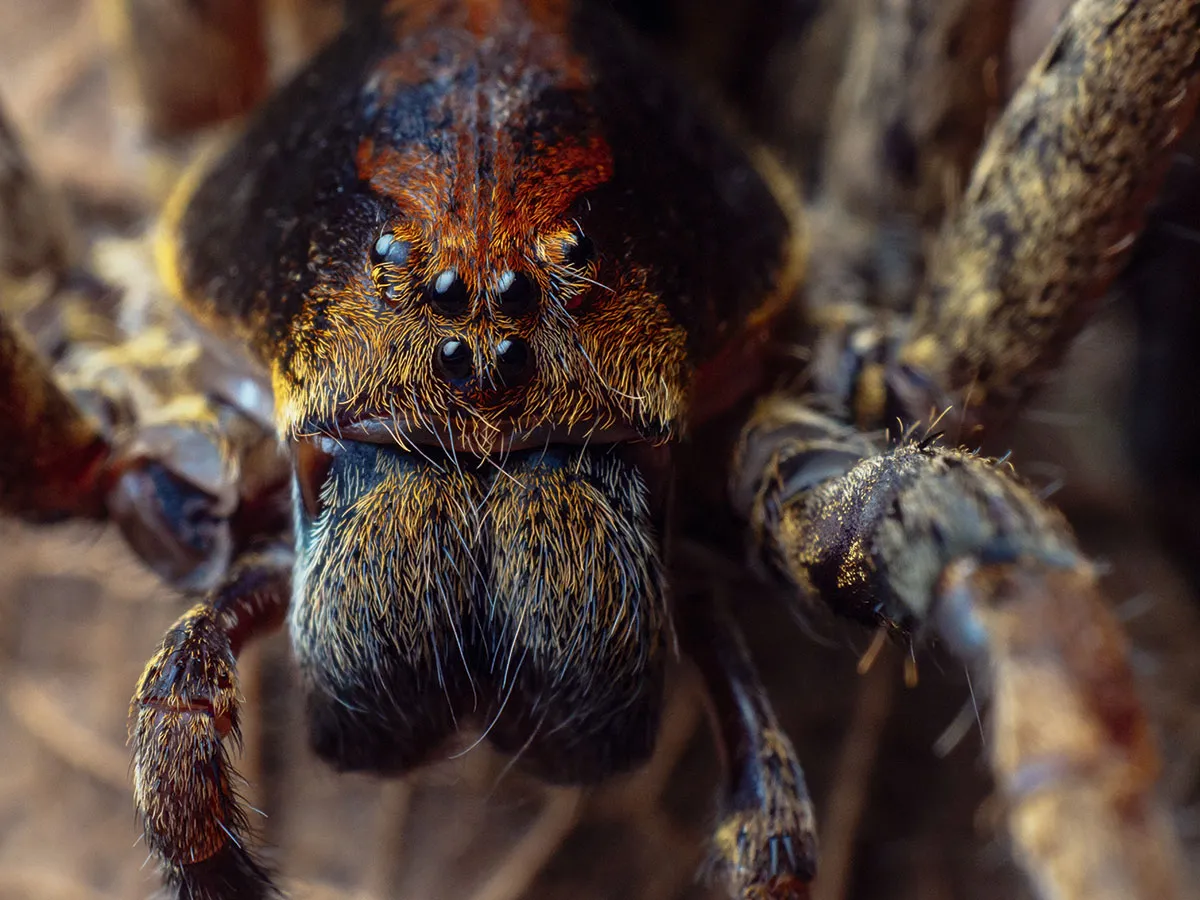
It seems that spiders don’t like odd numbers. Two body segments, eight legs, one to four pairs of spinnerets and always an even number of eyes. Most spiders, like this ornate wandering spider, have eight simple eyes, but some have six or two.
The way a spider catches its food has a strong influence on the ways these eyes are arranged. Web-building spiders, for example, tend to have smaller eyes that are evenly spaced apart, but the more centrally placed eyes of visual predators, like our friend here, are often enlarged. All the better to glimpse a tasty morsel with!
There are principal eyes (the bottom pair here) and secondary eyes (the rest), which differ in structure and function. Principal eyes have sharp vision, along with retinas that can move behind their fixed lenses, helping the spider to track its prey. Meanwhile, the secondary eyes work together to provide a wider field of view, and identify objects and movements of interest.
Red-eyed tree frog, Costa Rica
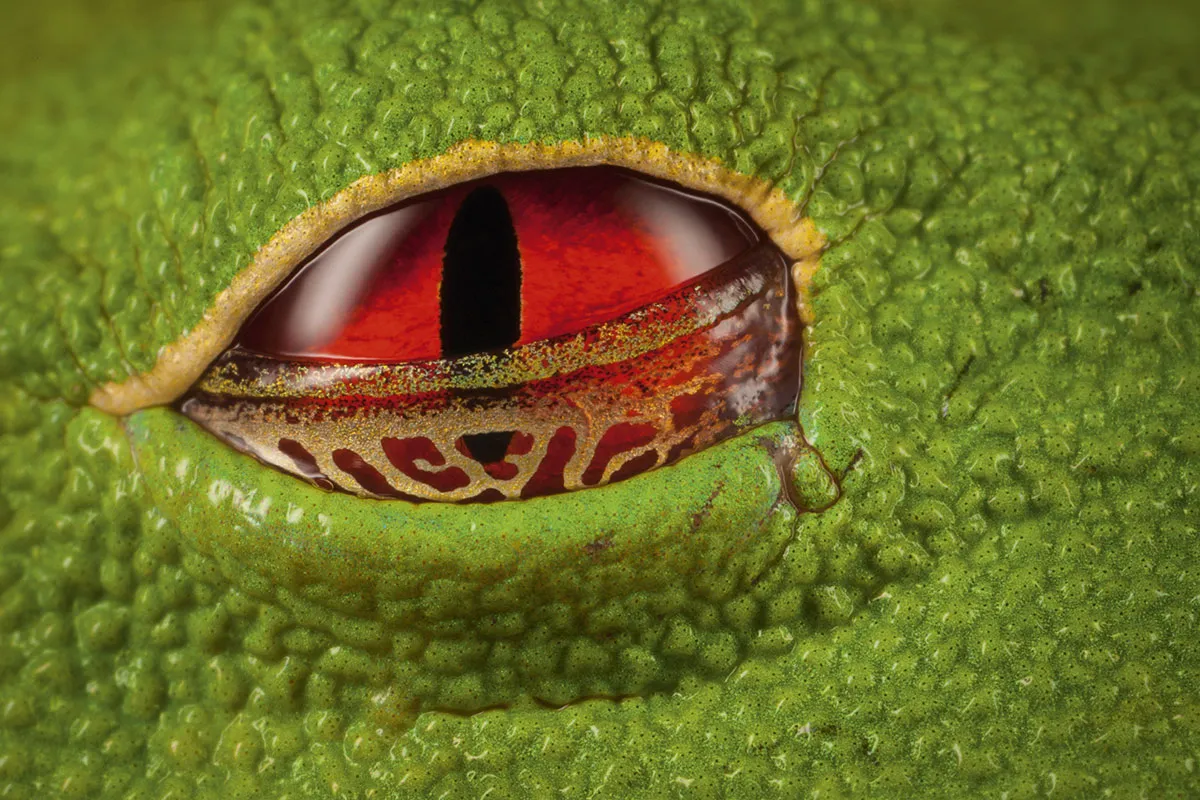
The red-eyed tree frog likes to snooze the day away clinging to the underside of a tropical leaf. To stay undetected, they cover their lurid blue and yellow side stripes with their folded limbs, and tuck their bright orange feet under their bellies.
A transparent lower eyelid, known as the nictitating membrane, creeps over the eye to camouflage it and keep it moist. If a hungry bird or snake approaches, the membrane lets in just enough light for the amphibian to become aware. Then it’s show time! Eyes open, stripes out, orange feet ‘in your face’ – the frog does its best to dazzle the predator.
It’s a ballsy bluff, as this frog is neither poisonous nor combative. Its eyes are an evolutionary ruse to scare off predators. The hope is that the assailant will startle long enough for the frog to hop away.
Peacock mantis shrimp, Indonesia
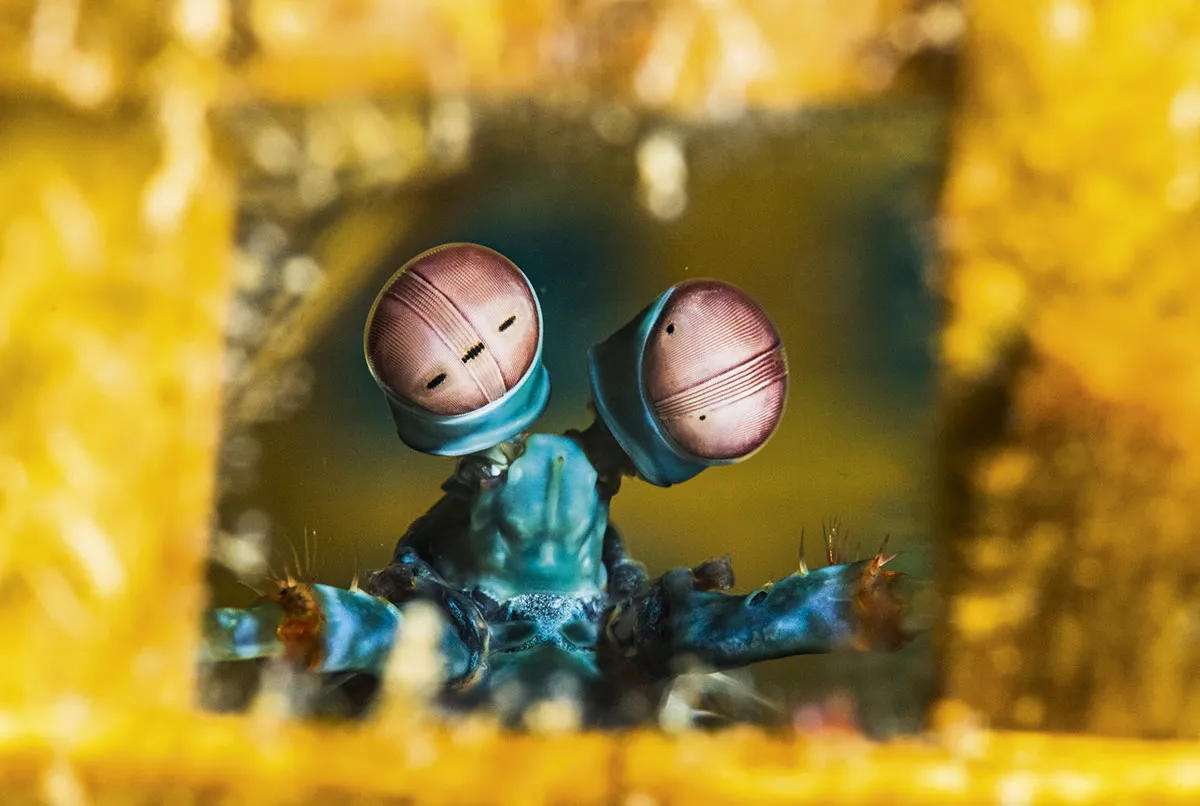
Why stop at three types of colour receptor, like humans do, when you could have a dozen like the mantis shrimp? It’s just one of the many quirks of this crustacean’s visual system. Its compound eyes sit on stalks, where they are permanently in motion and rotate independently. They can see colour, as well as ultraviolet and infrared. Each eye has independent depth perception, along with three black slits or ‘pseudopupils’.
Unlike regular pupils, which are anatomical features, pseudopupils are an optical effect created by the structure of the compound eye. These crustaceans build up a picture of their surroundings by moving their eyes up and down as they scan laterally across a vista. It’s a bit like a scanner capturing a photo, only faster and more reliable!
Pink lady mayfly, USA

Male pink lady mayflies, like this one, tend to have bigger eyes than their female counterparts, to help them to find a mate in the midst of a frenzied swarm. Each of its compound eyes is made up of thousands of lenses, all pointing in slightly different directions.
The eyes can detect movement and colour, albeit towards the blue and ultraviolet end of the spectrum. “This is important for seeing sky,” says Dr Luke Jacobus, a freshwater insect expert from Indiana University. “It also helps them orient for moving out of the water when they moult from the nymph stage to the next stage.” In addition, mayflies have three much smaller simple eyes: one in the middle, and two on either side of their face. Known as ocelli, these detect light and dark, and possibly day and night.
Elegant conch, Philippines

The elegant conch lives in the shallow, well-lit tropical waters of the western Indo-Pacific. The herbivorous molluscs have evolved large eyes and excellent vision. “Conch vision is on a par with that of worker bees, which use their vision for complex flight,” says Alison Irwin from the Natural History Museum. “It’s really amazing.”
Their eyes are on stalks, which enhances their field of view, and their retinas contain six different cell types, which is more than has been found in any other gastropod. Irwin has played conches videos designed to mimic a rapidly approaching predator, and found that the animals react strongly to even the smallest of threats. They swim away from predators, such as turtles and crabs, by making large jerky movements, but this uses a lot of energy.
It makes sense they have evolved the ability to see fine detail, says Irwin, so they can accurately spot trouble from a distance and not waste resources responding to false alarms.
Banded guitarfish, Mexico

Question: How can you tell if a guitarfish can see in colour? The answer, according to Prof Nathan Hart from the University of Queensland, is by training these rays to choose between different coloured cards in exchange for a mashed prawn reward. “Unlike sharks, which appear to be completely colour-blind, guitarfish seem able to see colour,” he says. “They are dichromats, so they see the world a bit like a red-green ‘colour-blind’ human.”
The silvery part of the eye is the iris, with its three-lobed flap partially covering the jet-black pupil. This can retract or advance to alter the amount of light entering the eye, and the cryptic shape is thought to help with camouflage. With their pebble-coloured hues, these bottom-dwellers blend in well with the ocean floor, but their eyes can be a giveaway.
Obscuring the pupil makes the guitarfish harder to spot, while the iridescent iris acts like a mirror, helping the ray to blend in seamlessly with its surroundings.
Spiny pink scallop, Canada
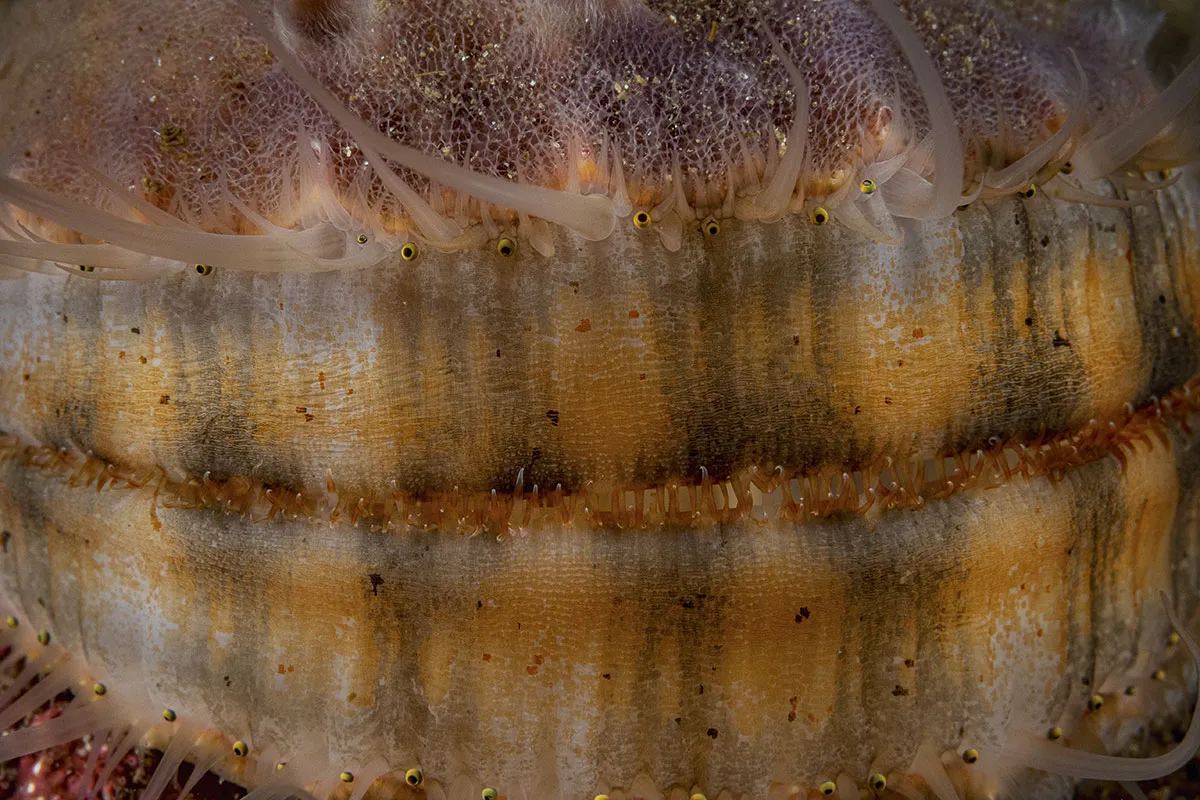
The spiny pink scallop has hundreds of tiny eyes which line the edge of its two shells. Each eye contains a pupil, a lens, not one but two retinas, and a concave spherical mirror made of guanine crystals. The arrangement has been compared to the optic systems of advanced telescopes, but the end results are less than stellar.
Scallop vision is lousy. The mobile marine bivalve mollusc is unable to make out objects, but it can at least sense the difference between light and dark. So, if a large, predatory octopus is looming nearby, it can clatter its shells open and shut like a pair of false teeth, and comically swim away.
Some scallops are also able to detect the size and speed of particles moving past them in the water. Scallops are filter feeders, so this enables them to watch the water for feeding opportunities, and then ‘open wide’ at just the right moment.
Panther chameleon, Madagascar
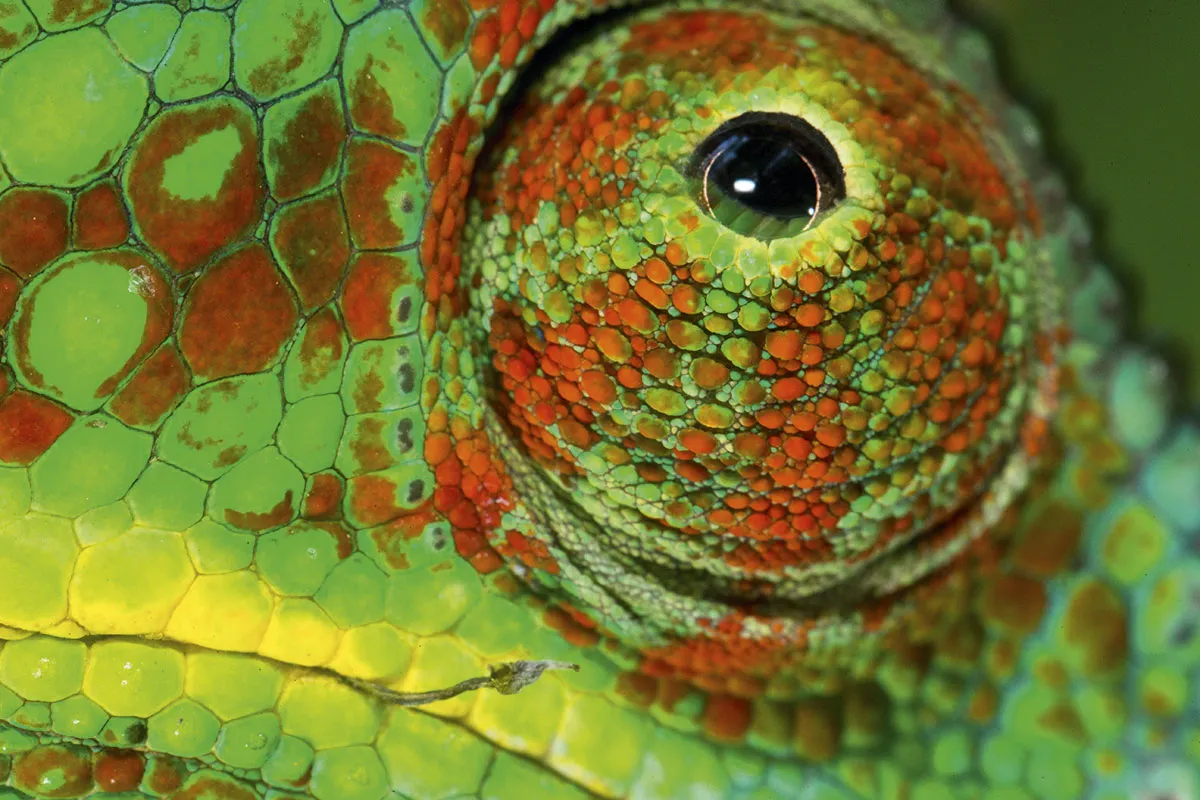
These are the best boggly eyes in the animal kingdom! The eyes of the colourful panther chameleon reside in twin conical turrets on either side of the head. Upper and lower eyelids are joined, leaving just a small pinhole for light to enter. Under the lids, the eyes can rotate and focus independently, giving this reptile an almost 360° view, and the ability to look at different objects on opposite sides of its head.
When a juicy insect is spotted, the reptile can then switch from monocular to binocular vision, turning its head so both eyes can focus on the morsel. It’s a move that enhances depth perception, and within less than one-hundredth of a second, a sticky tongue has darted out, grabbed the prey and gobbled it down. Compared with other reptiles, their vision is particularly keen. Panther chameleons can spot small insects from up to 10 metres away.
- This article first appeared inissue 379ofBBC Science Focus Magazine–find out how to subscribe here
Read more about animal senses: